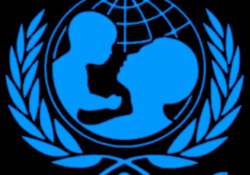India has second-highest number of child marriages: UNICEF
New Delhi: India had the highest number of unregistered children under age five between 2000 and 2012 and the second-highest number of child marriages, according to a U.N. report which said the country still needs

New Delhi: India had the highest number of unregistered children under age five between 2000 and 2012 and the second-highest number of child marriages, according to a U.N. report which said the country still needs to improve immunisation coverage and stop gender-based sex selection.
The report “Improving Children's Lives, Transforming the Future — 25 years of child rights in South Asia” by the United Nations' children agency, Unicef, analyses the progress made over the last quarter century on key issues that directly affect the lives of children in the region.
At 71 million, India had the largest number of children under the age of five whose births were not registered between 2000-2012.
The report said that birth registration levels in South Asia have increased since 2000, but progress has been slow.
India, along with Afghanistan, Bangladesh and the Maldives, has been recording “significant improvements” in birth registration but about 100 million children in the region are still not registered at birth.
India has the greatest disparity between the poorest and richest households, with children in the poorest households being three times less likely to be registered than those in the richest.
Religion also appears to play a role as Muslims have the lowest level of birth registration in India (39 per cent) followed by Hindus (40 per cent) while the Jains have the highest (87 per cent).
46% of South Asian girls marry by 18
Almost half of all girls in South Asia marry before the age of 18. One in five girls are married before the age of 15. These are the highest rates in the world.
“These figures confirm that child marriage is rooted in gender norms and in expectations about the value and roles of girls,” the report added.
In India, 43 per cent of women aged 20-24 were first married by the age of 18 between 2005-2013. Girls with no education are 5.5 times more likely to marry or enter into union as those with at least 10 years of education.
On gender-biased sex selection, the report said the practice is more prevalent in the west and northwest part of the country. The child sex ratio, which is the number of girls per 1,000 boys, among children aged 0-4 in India was 924.
On immunisation coverage, it said some countries in South Asia, particularly Bangladesh, Sri Lanka and Nepal, have made significant improvements since 1990 but coverage is still far too low in Afghanistan, India and Pakistan.
The report was released to commemorate 25 years since the 1989 U.N. adoption of the Convention of the Rights of the Child. It pointed to some improvements over the past two decades as South Asian government adopted policies to protect child rights.
The prevalence of children with stunted growth in the region dropped from more than 60 per cent in 1990 to 38 per cent in 2012 as nutrition improved, the report said. Still, the report said regional averages mask disparities, with stunting far more pervasive among children from poor families, rural areas and oppressed ethnicities.
It said more than 2 million South Asian children die before their fifth birthday of preventable causes, and nearly 38 per cent of children have chronic malnutrition.